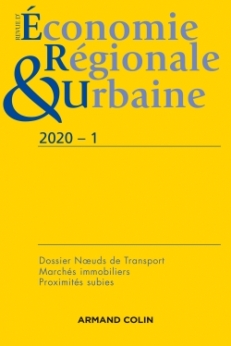
Revue d'économie régionale et urbaine (1/2020)
Pour acheter ce numéro, contactez-nous
Recevez les numéros de l'année en cours et accédez à l'intégralité des articles en ligne.
Cet article porte sur la façon dont les pôles d’échanges sont mobilisés sur les marchés fonciers et immobiliers de la métropole lilloise. Dans la première partie, l’évolution contemporaine des outils d’urbanisme de la métropole lilloise est présentée. Leur objectif est de contenir l’étalement urbain à proximité des pôles d’échanges. Les méthodes employées font l’objet de la deuxième partie. Elles couplent l’analyse d’annonces immobilières et d’entretiens auprès d’intermédiaires des marchés fonciers et immobiliers. Elles pourraient être utilisées dans des secteurs où des projets d’aménagement de l’espace en lien avec les transports collectifs sont programmés. Les résultats sont ensuite exposés dans une dernière partie. Les pôles d’échanges sont dissimulés par le vocabulaire de la centralité. Ils sont utilisés pour entretenir une argumentation relative à la dualité entre automobile et transport collectif. Ils peuvent ainsi concourir à la ville diffuse.
This article focuses on the use of interchange station in real estate of the Lille metropolitan area. Two interchange stations are particularly studied in the suburban area. The interchange stations involve at least two modes of public transport and also have urban and service functions. The contemporary evolution of urban planning tools in the Lille metropolitan area is described in the first part. The tools are less and less sectoral and combine housing and transport issues more closely. Their objective is to contain urban sprawl near interchange stations. The methodological elements are explained in a second part. These elements correspond to the coding of real estate ads for four years and a protocol of interviews with intermediaries in the real estate markets (real estate agencies, developers...). The methodology could be used again in sectors where public transport projects are planned. In the last part, the results show that the effects of spatial planning policy, although less sectoral than before, are linked to its appropriation by intermediaries in the real estate markets. Their speeches shape the interchange station for commercial purposes, sometimes in contradiction with the limitation of urban sprawl. The interchange stations are masked by the vocabulary of centrality. They are used to maintain an argument relating to the duality between automobile and public transport. They can promote urban sprawl. A public policy, shared before its implementation with intermediaries, could make it more effective in terms of habitat and mobility, in metropolitan area.